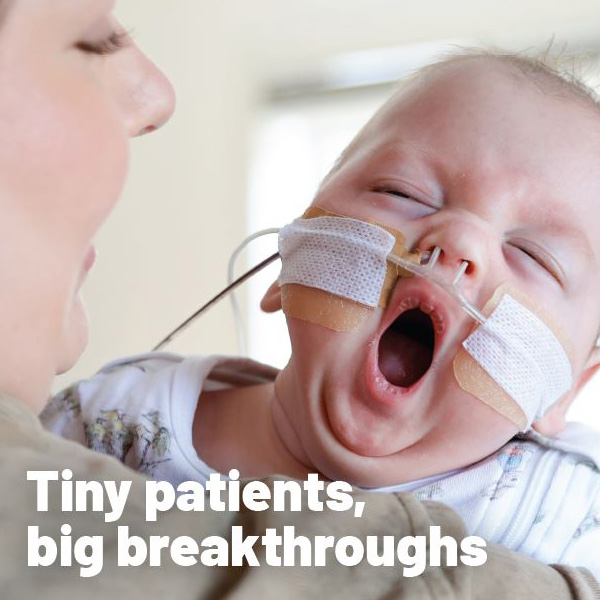CDH research gives hope to families
By Hudson Institute communications
Research leading to improved outcomes for babies with congenital diaphragmatic hernia was the focus of a community forum last month in Melbourne.
The Fetal Therapy Research Group, led by Associate Professor Ryan Hodges, is working towards improving outcomes for babies who have difficulty breathing at birth due to a condition called congenital diaphragmatic hernia (CDH).

Supported by CDH Australia—a charity that supports families along their CDH journey—the research team is investigating new therapies that could help these babies’ lungs develop better during pregnancy.
On Friday, 25 May 2018, President of CDH Australia, Ms Tara Gallo, and board member Ms Courtney Vodopic, visited the Monash Health Translational Precinct (MHTP) to gain a better understanding of the bench-to-bedside research being undertaken.
“Tara and Courtney were really impressed with the care taken in every aspect of the MCH design to ensure that it is a safe and comfortable environment for young children and their families, and couldn’t believe the incredible scope of research being undertaken to improve outcomes for future babies born with CDH,” PhD student, Aidan Kashyap, said.
On Saturday, 26 May 2018, CDH Australia held its Annual Forum – an event designed to provide the CDH community with an opportunity to come together to connect, support, and learn.
Congenital diaphragmatic hernia (CDH) facts
- 1 in 4000 babies are born with congenital diaphragmatic hernia (CDH).
- CDH is caused by a restriction on the baby’s lungs during development.
- For babies born with CDH, birth is a treacherous experience. Early in their development, a hole forms in the diaphragm, allowing the stomach to move into the chest, preventing their lungs from growing. When they are born, their small lungs are often unable to breathe enough air to sustain life.
- Around 30 per cent of babies born with CDH die soon after birth, while survivors may face lifelong neurological and respiratory problems.
Guest speakers at the event included paediatric surgeon, Mr Ram Nataraja and Aidan Kashyap, who gave presentations on the current management of babies with CDH at Monash Children’s Hospital (MCH), and some of the exciting new research on the horizon.
“In CDH, a hole in the diaphragm allows abdominal organs to enter the chest and prevent the lungs from growing appropriately during fetal development,” Aidan said.
“As a consultant paediatric surgeon at MCH, Mr Nataraja is an expert in repairing these hernias after birth.
“However, many of these babies continue to face difficulties breathing even once the hole is repaired, and some don’t make it to the operating room at all.”
Aidan’s research focuses on improving lung development in these babies before they are born, so that one day all babies with CDH, and their parents, can breathe a little easier.
If you, your extended family, or your patients have been affected by CDH, please get in touch with CDH Australia at cdh.org.au.
Contact us
Hudson Institute communications
t: + 61 3 8572 2697
e: communications@hudson.org.au
About Hudson Institute
Hudson Institute’ s research programs deliver in three areas of medical need – inflammation, cancer, women’s and newborn health. More
Hudson News
Get the inside view on discoveries and patient stories
“Thank you Hudson Institute researchers. Your work brings such hope to all women with ovarian cancer knowing that potentially women in the future won't have to go through what we have!”





